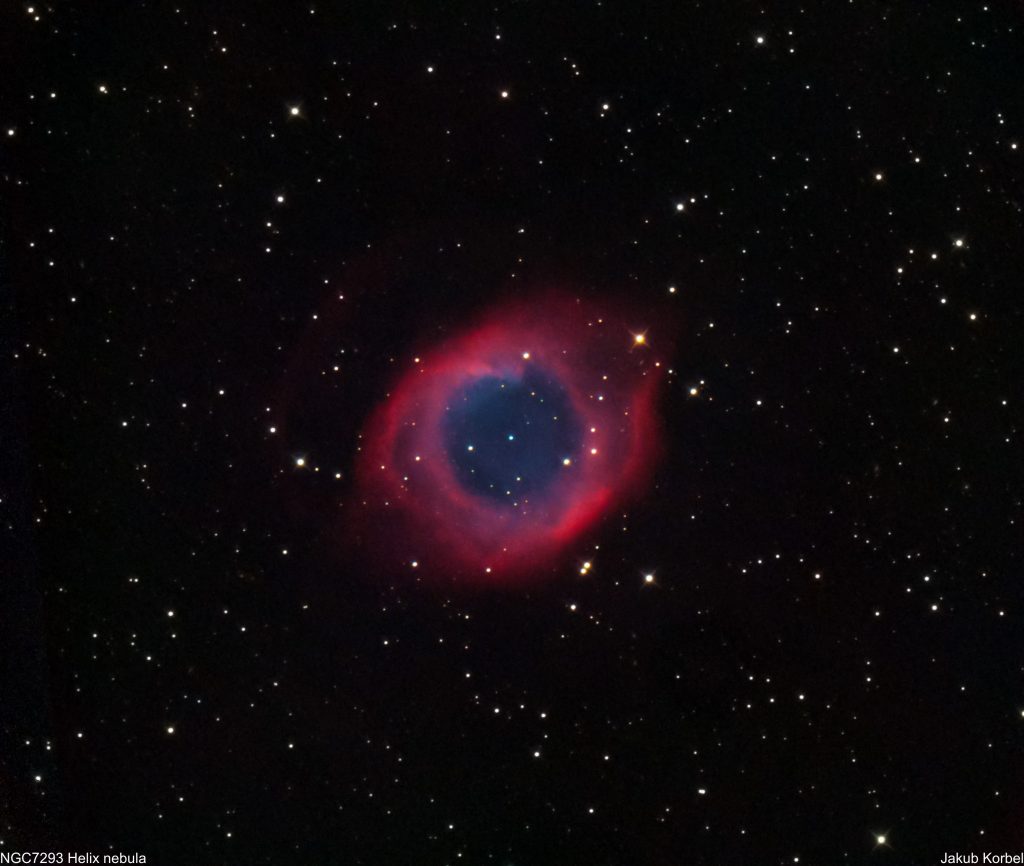Trifid nebula is a combination of emission, reflection and dark nebula – pretty unique. It got its name from 3 dark lines across emission (red) part. The lines are dust clouds blocking the light emitted by ionized hydrogen. It’s possible to observe this nebula, but one needs dark skies and a telescope with aperture at least 120 mm. The nebula can be found in constellation Sagittarius and it’s 5200 light-years far from Earth.
The picture was taken in Gavdos during my first dark sky chasing. The total integration time is only one hour, which is remarkable for such portable setup.
Technical details
| Telescope: | RC 154/1370 |
| Aperture: | 154 mm |
| Focal length: | 917 mm |
| Mount | iOptron CEM25P |
| Autoguiding | QHYCCD miniGuideScope 130 mm f/4.3, ZWO 174 MM |
| Camera: | ZWO 1600 MC @ -15C |
| Corrector: | Astro Physics CCDT67 |
| Filters: | UV, IR cut |
| Exposure: | 20x 180s Gain 240 |
| Date: | 2017-09-23 |


